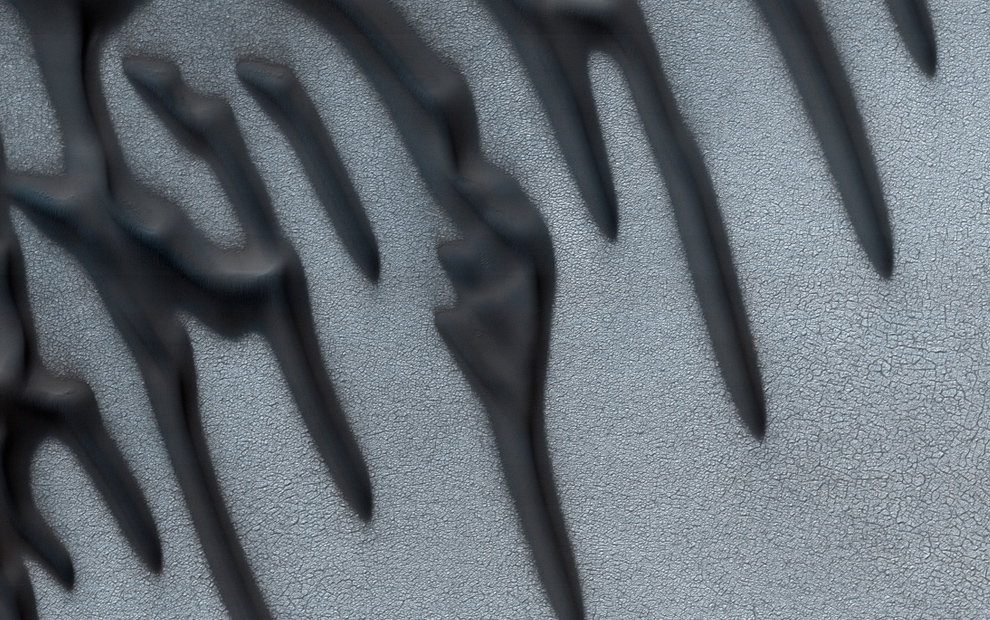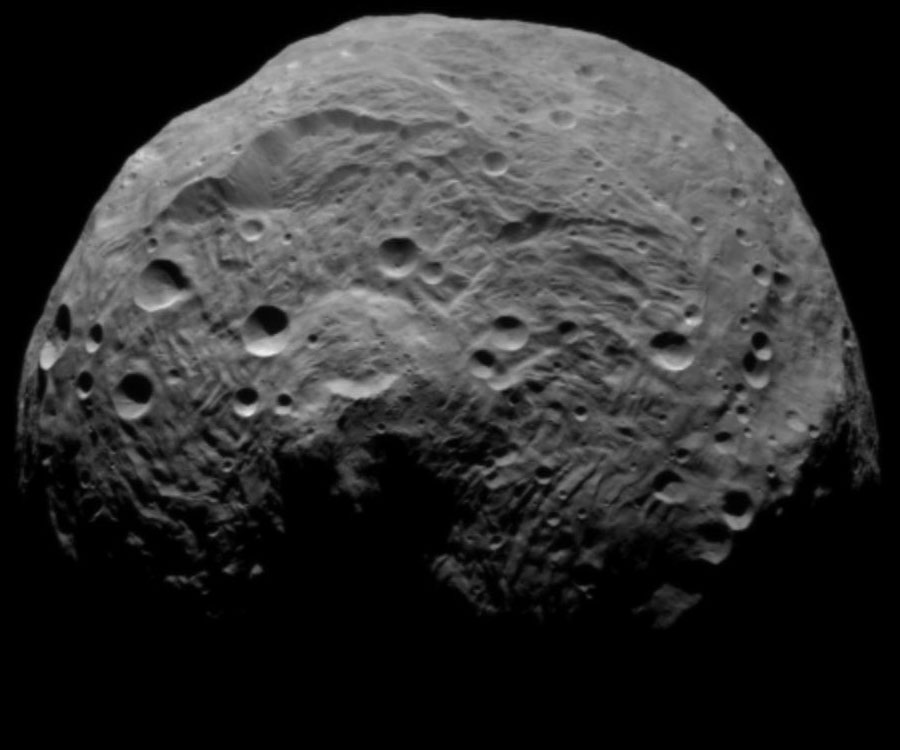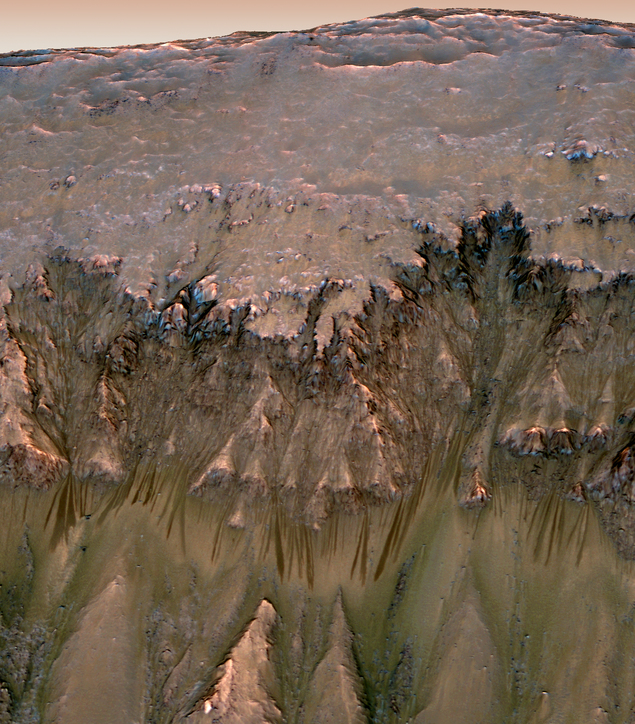Post contributed by Dr. Alfred S. McEwen, Lunar and Planetary Laboratory, University of Arizona, USA.
Recurring slope lineae (RSL) are dark linear markings on steep slopes of Mars that regrow annually and likely originate from the flow of either liquid water or dry granular material. Following the great dust storm (or planet-encircling dust event) of Mars Year 34 (in 2018), the High Resolution Imaging Science Experiment (HiRISE; McEwen et al., 2007) on Mars Reconnaissance Orbiter (MRO) has seen many more candidate RSL than in typical Mars years (Image 1). These RSL sites show evidence for recent dust deposition and dust devil activity, so dust lifting processes may initiate and sustain RSL activity on steep slopes.

Image 1: RSL and dust devil tracks on a hill in the southern middle latitudes (41.1ºS, 187.4ºE). Inset shows some of the RSL at higher resolution. Hundreds of dark dust devil tracks are seen on the full image as the more diffuse lines that cut across topography. HiRISE image ESP_058122_1385, acquired after the 2018 dust storm. Credit: NASA/JPL/University of Arizona
(more…)



